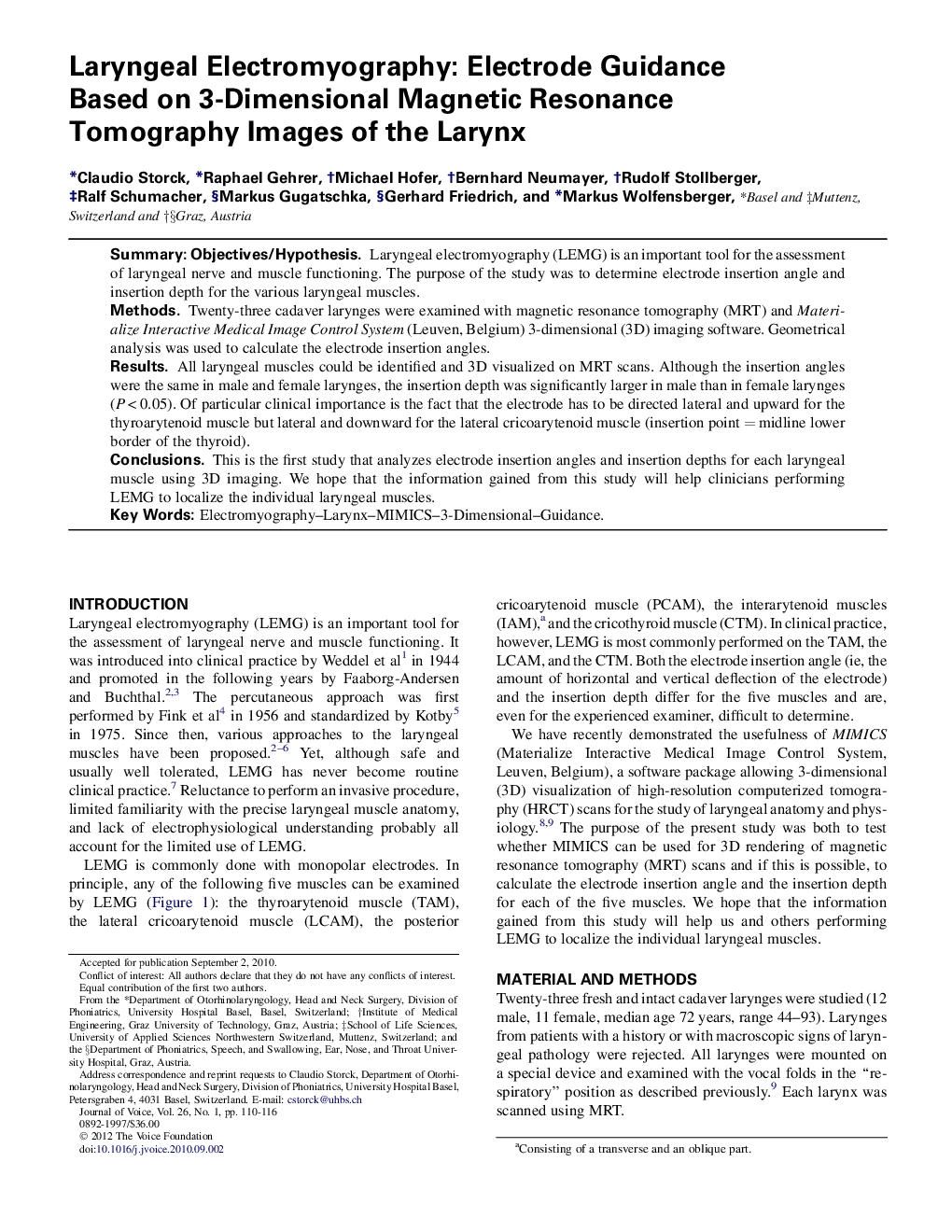| Article ID | Journal | Published Year | Pages | File Type |
|---|---|---|---|---|
| 1101762 | Journal of Voice | 2012 | 7 Pages |
SummaryObjectives/HypothesisLaryngeal electromyography (LEMG) is an important tool for the assessment of laryngeal nerve and muscle functioning. The purpose of the study was to determine electrode insertion angle and insertion depth for the various laryngeal muscles.MethodsTwenty-three cadaver larynges were examined with magnetic resonance tomography (MRT) and Materialize Interactive Medical Image Control System (Leuven, Belgium) 3-dimensional (3D) imaging software. Geometrical analysis was used to calculate the electrode insertion angles.ResultsAll laryngeal muscles could be identified and 3D visualized on MRT scans. Although the insertion angles were the same in male and female larynges, the insertion depth was significantly larger in male than in female larynges (P < 0.05). Of particular clinical importance is the fact that the electrode has to be directed lateral and upward for the thyroarytenoid muscle but lateral and downward for the lateral cricoarytenoid muscle (insertion point = midline lower border of the thyroid).ConclusionsThis is the first study that analyzes electrode insertion angles and insertion depths for each laryngeal muscle using 3D imaging. We hope that the information gained from this study will help clinicians performing LEMG to localize the individual laryngeal muscles.
